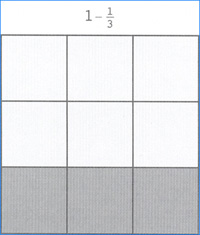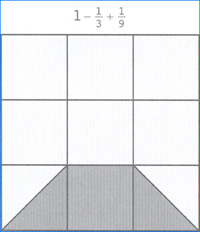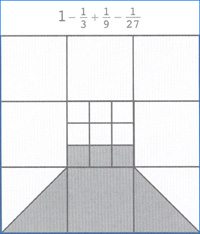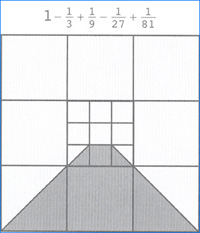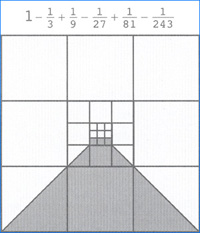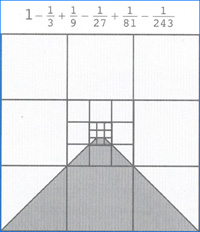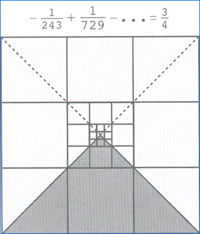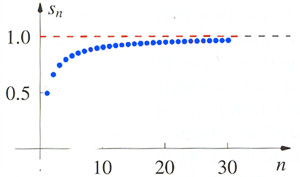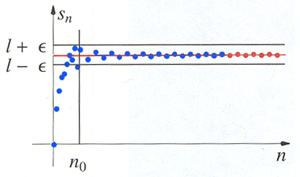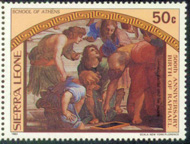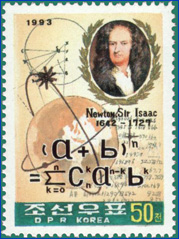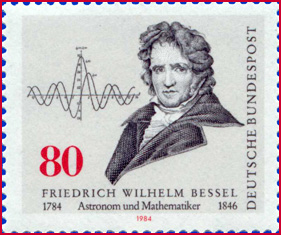| Back to . .
.
Deposit #96 |
 Another Converging Series " Read Euler. He is our master in all. " Laplace ( 1749 - 1827 ) |
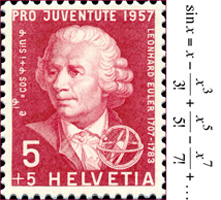 |
|
An Illustration of the Sum of an Infinite Series.  
|
Historical Sketch:
The most basic
of sequences and infinite series has its roots
in Antiquity. From Egypt we find the sum of a finite power series
is in the
Rhind Papyrus, Problem 79. Zeno's Paradox of Achilles
and the Tortoise has had a life span of over 2,000 years. One of
the few high points for mathematics in the Middle Ages was Oresme's
grouping of fractions to show the harmonic series would never
converge.
With accumulated perspective, one of the legacies of centuries of thought is far more patience and curiosity about infinite processes. Certainly this gave birth to the "calculus" in the seventeenth century. Today we apply the most rigorous ideas of limit and convergence. These concepts were not developed until the late eighteenth and early nineteenth centuries. The pure usefulness of a series that converges remains important to all theoreticians. And today, well, we can add the embellishment of animation and computer graphics.  |
|
|
|
One
of
the pleasures of
visiting the Sistine Chapel in Vatican City is seeing Raphael's The
School
of Athens. His famous frescoes are just outside the doorway
to the Chapel. Among the important mathematical figures
represented are Euclid, Ptolemy,
Pythagoras and Zeno. Click on the above stamp to see an
enlargement.
In particular, The School of Athens is considered one of the earliest and finest examples of perspective, a highly geometrical illusion of giving distance its proper proportion on a plane surface. |
|||
| Hasan Unal, Proof Without Words:Sum of an Infinite Series, The College Mathematics Journal, 40 (1), January, 2009, p. 39. | ||||
|
For the Harmonic Series: < ..//hseries/hseries.htm
> (Streaming video). |
||||
| For the Geometric Series: < ..//series/series.htm > (Streaming video). | ||||
| For Baravelle Spirals: < ..//baravelle/baravelle.htm
> (Java animation). |
||||
| For another Geometric Series
< ..//seriesfold/seriesfold.htm
> (Paper folding demonstration). |
||||
| McQuarrie, Donald A., Mathematical Methods
for Scientists and Engineers,
University Science Books, 2003, pp. 63-113. |
||||
| Stewart, James, Calculus, 5th ed., Thomson:
Brooks/Cole, 2003, pp. 736-827. |
||||
|
||||
|
||||

